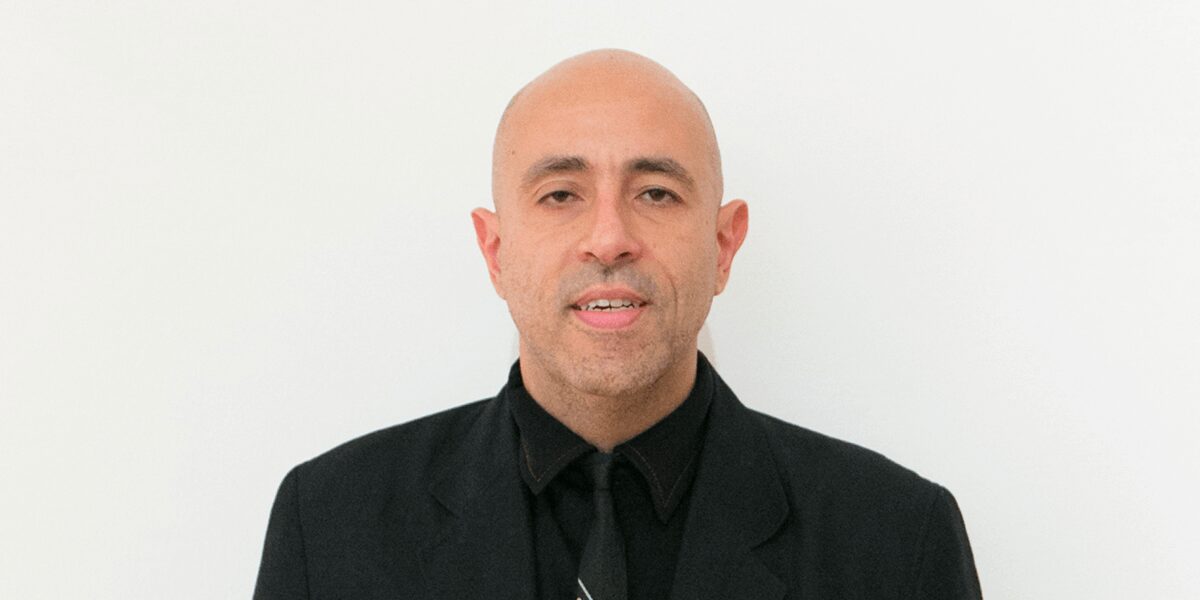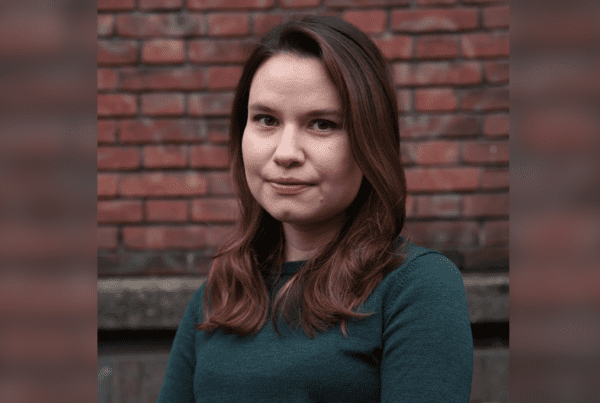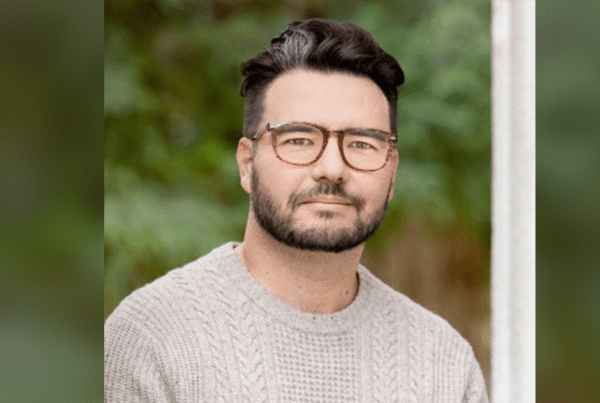Jack, you just published On Microfascism. Can you begin by giving us a definition of the term? How is it different from previously conceived notions of fascism?
Most studies of fascism (even if they move beyond the particular interwar 20th century European instances) tend to focus on well-formed organizations like political parties or state-formations. “Microfascism” refers to the less visible, more emergent qualities of fascism before we see a fully-formed movement, party, or regime. Microfascism is primarily rooted in everyday culture, specifically around the productions of self/other power relations.
The micro is not simply small in scale—it signals something pervasive and less perceptible. Less individual microbes and more microbiome as an environment. A concept like microaggressions is similar here, if we think of them not as discrete actions but connected as an ecology of domination, subjugation, and oppression. This is the cultural, even spiritual, dimension of fascism, one I trace to pre-20th century (even archaic) formations of gender and warrior culture.
Microfascism was coined by Felix Guattari and is briefly mentioned in scattered forms in a few of his essays. My book fleshes the concept out by tracing microfascism to long-standing forms of modern subjectivity, especially as it is gendered. The book also uses it to analyze contemporary events, including gendered violence, mass shooters, incels, the Jan 6 insurrection, Redpilling, Boogaloo Bois, and a host of digital culture examples.
“Microfascism” refers to the less visible, more emergent qualities of fascism before we see a fully-formed movement, party, or regime. Microfascism is primarily rooted in everyday culture, specifically around the productions of self/other power relations.
Microfascism also importantly refers to the changing forms of collective action. Instead of mass movements or even identifiable organizations, microfascism names the loosely coordinated, networked, and stochastic operations of violence and eliminationism we are increasingly witnessing. Think here of GamerGate, but moreover the ways incels and other mass shooters imitate and inspire each other. These are isolated individuals who can act together, a seeming contradiction until we see how micro-actions flow and influence others. The internet obviously enables these compositions.
Why is it important to study microfascism? Antifascist work needs to detect versions of fascist culture that continue to percolate after more familiar political phenomena (e.g. “alt-right”, “trumpism”) recede from public scrutiny. Hopefully the book will contribute to a rethinking of what fascism is, how it’s embedded in everyday subjectivities and desires, and where fascism takes root.
One of your central themes is the way in which feminism, by its very nature, is anti-fascist owing to microfascism’s preoccupation with autogenesis. How does autogenesis play out in both cases of extremism and the day-to-day? And what is the larger purpose of microfascism’s obsession with death?
Yes, though I would modify my claim to emphasize that it’s certain kinds of feminism that are antifascist, as there are versions that repeat the microfascist desire to eliminate others (by hostilely excluding transfeminism, for example).
I understand gendered power to be “primordial,” not in the sense of eternal or natural, of course, but of the “primary order”—the foundation of hierarchical social power.
Drawing from feminist theorists like Judith Butler and Luce Irigaray, I located autogenesis as the key subjective process that founds both patriarchal relations and modern notions of freedom and sovereignty. Autogenesis is the modern fantasy of self-creation, a fantasy that nevertheless is implemented in action upon the world to shape reality through order. Autogenesis forms a subject by separating from its material conditions, interdependence, and sociality. It involves a flight from materiality to establish abstract values (God, Truth, Honor) which then return as impositions on the world through hierarchical ordering. This modern subjective circuit of flight/return is profoundly masculine.
Following in the footsteps of feminist political theorists and anthropologists, I understand gendered power to be “primordial,” not in the sense of eternal or natural, of course, but of the “primary order”—the foundation of hierarchical social power. Here I mean 1) the reduction of a multitude of genders to a binary; 2) the elevation of one term in the binary over the other; and 3) the building of a society on that asymmetrical division. If we take feminism as a method of analyzing society through gender as core category, then we can see how fascist calls for renewing social order inherently entail gendered oppression and violence (controlling reproductive rights, eliminating gender multiplicity, enforcing patriarchal family and kinship structures, reducing women’s potentials).
As an analytic framework, feminism allows us to see gender at work where others overlook it. For instance, we need to examine more closely mass shooters’ beliefs about women. Let’s take the May 2022 Buffalo mass murderer. The vast majority of commentators focused on his white supremacist motivations around “The Great Replacement.” Obviously, this focus makes sense given that the bulk of his manifesto was about race and given his decision to target Black people. Marginalized in this public discussion was a brief, albeit illuminating, passage near the end of the manifesto where he speaks of a deeper problem than ethnic replacement that needs to be fixed. He identifies a loss of social order which would require the creation of a new society built on strong traditions and gender norms. Such calls for restored or reinforced patriarchal gender norms link a number of these mass killers (both spectacular and ordinary) to RedPill manosphere enthusiasts to Christian theocracy technologists (like Gab founder Andrew Torba) to news influencer-agitators like Tucker Carlson to elected officials like Paul Gosar and Josh Hawley, all of whom desperately seek to rebuild masculine confidence through patriarchal domination.
From my perspective, the US is catching up to other parts of the world which have already analyzed gender as core to right-wing populist movements. “Anti-gender ideology” has been central to the transnational right-wing campaigns in Europe, Latin America, and Asia. With the recent convergence of heightened anti-reproductive choice and anti-LGBTQ+ campaigns by politicians and militant street thugs, the US is now encountering the patriarchal violent cornerstone of emergent fascism. A feminist antifascism is all the more urgent.
As for microfascism’s attachment to death, plenty of commentators have made historical comparisons between the contemporary right-wing and classic fascism as death cults. The rhetoric and imagery, from fashwave aesthetics to Trumpist “resurrection” talk to the love of ruins, is laced with a microfascist death drive. Microfascism is both necropolitical (organizing society through sovereign decisions to determine who must die) and necrophiliac (in the political sense proposed by Erich Fromm and Mary Daly—a desire for the inert, the objectified, for anti-life).
Microfascism is both necropolitical (organizing society through sovereign decisions to determine who must die) and necrophiliac (in the political sense proposed by Erich Fromm and Mary Daly—a desire for the inert, the objectified, for anti-life).
These necrotics stem from a profound hostility to material embodiment and life-giving processes, usually coded as chaotic nature and “feminine.” The flight from materiality embedded in autogenetic sovereignty has deadly consequences. When it comes to fighting microfascism, we’re up against something that is both homicidal and suicidal. We see it in the homi-suicidal dynamics of mass shooters, who kill while often being indifferent to their own life. In its downward spiral, the microfascist subject is not content with eliminating itself—it feels the need to take others with it. I call this a “downsinking” rather an uprising, which makes analyzing and fighting it more challenging.
In your May 2021 article ‘Give me Liberty or Give me Covid’ you describe the ways in which the necropolitical impulses of organizations such as the Proud Boys and Oath Keepers has been on full display as a result of the ongoing coronavirus pandemic. How has the necropolitical combined with the conspiratorial in the present public health crisis? Are they related or discrete phenomena within the reactionary response to the pandemic?
These have been connected phenomena but now find themselves in a new fusion that spurs volatile collective action.
Back in the 1990s, the broader Patriot movement trafficked in theories about the New World Order (NWO), concentration camps for dissidents, and confiscation of citizens’ arms. Similar claims are now circulating (e.g. “The Great Reset” is the new NWO) through social media and have found resonance with anti-vaxxers. Some of the fascistic groups are less concerned with pandemic specifics and are more interested in restoring white supremacy and patriarchy, while others are using pandemic-related popular suspicion to further their own aims. Antisemitism also bridges these phenomena in many cases, whether explicit or implicit. What ties anti-vaxxers to far-right militants is the notion that they should have the freedom to impose their order on others, whether the sovereign spread of viruses or the violence of restorative gender order. And the necropolitical dimension infuses both, whether as eugenic indifference to the death of others or imposing their own domination even if it means their own death and the death of others.
A deep fear of losing any power results in a self-perceived victimhood by these groups. The resulting fetish is a “warrior hero” figure who will wage this war of restoration through massacres and martyrdom. Their necropolitics exist even simultaneously with their fixation on biological reproduction and retraditionalizing gender roles to ensure white supremacy. This contemporary nihilistic fusion reminds me of what Deleuze and Guattari say about a precursor: “from the very beginning the Nazis announced to Germany what they were bringing: at once wedding bells and death, including their own death, and the death of the Germans.”
Lastly, in the realm of conspiracy theories, your book Conspiracy Panics discusses the moral panic surrounding conspiracy theories. Can you describe how these panics function within the public discourse and what relationship they have with liberalism? How can liberalism respond to conspiracy theories and to necropolitical impulses?
In that book I took liberalism as a mode of governance in its classic sense of reducing central regulation of free zones (be they individuals or markets), valorizing liberty tied to responsibility, and encouraging skepticism towards excessive state intervention. With regard to the last element, conspiracy theories presented a conundrum. Liberalism requires skepticism, but not too much of it. Liberalism seeks a moderate amount of suspicion to remain vigilant of government excesses, while simultaneously needing to be vigilant against exaggerated versions of that suspicion. From Richard Hofstatder’s 1960s groundbreaking essay on the Paranoid Style onwards, conspiracy theories were taken to be social problems defined by this excess. Since Conspiracy Panics was published in 2008, we have seen a metastasized, internet-fueled populist hyperskepticism unleashed against most modern institutions.
The moral panics over conspiracy theories signal this crisis within liberalism. These panics often call for a reestablishment of a political order that grounds itself in a moderate center while defining these excesses as “extremism” (often on both Left and Right). In the past five years or so, these panics have been intensified thanks to a simultaneous proliferation of conspiracy theories (coded as the most dangerous form of misinformation and post-truth) and social media responses to these dangerous knowledges (such as the shaming of tech companies to moderate better). In my 2020 update to Conspiracy Panics (a journal article titled “Civil Society must be Defended”) I argue that this new moment seeks to secure a liberal political order only by embracing state and nonstate security services as an expansion of communications warfare, even a counterinsurgency model of governance in the US.
Liberalism would need to come to terms with its internal and external conditions to address the current rise of not just conspiracy theories, but the fusion with necropolitical microfascism. The internal one is what I’ve described regarding skepticism: who is to determine the proper amount of suspicion needed by citizens? The external ones include the historical embeddedness of liberalism within state-orders, social hierarchies, and war machines. How has modern Western liberalism rested on settler colonialism, capitalist structural inequalities, and carceral systems? Can it overcome those through liberal values?
The moral panics over conspiracy theories signal this crisis within liberalism. These panics often call for a reestablishment of a political order that grounds itself in a moderate center while defining these excesses as “extremism” (often on both Left and Right).
Given my focus on gender, I’d say the most vexing challenge for liberalism is something that seems to be both inside and outside of it. If we take the rallying cry “Liberty, Equality, Fraternity” we can note that much attention has been paid to developing the first two principles within liberal thought, whether as formal rights or informal sensibilities. But fraternity has been largely ignored. Is this because it is unnecessarily attached to the prior two? Or is it perhaps because it actually informs the instantiations, and perhaps the ideals, of liberalism? Maybe the brotherhoods and masculine pacts are indispensable to modern liberalism (in the nation-state, for instance), even if they seemingly expand to include women in their ranks. The feminist understanding of modern brotherhoods as patriarchal pacts continue to challenge much of liberalism’s self-understanding as a practice of ensuring liberty and equality.
Until liberalism reckons with these conditions and contradictions, it will likely continue to focus on its own preservation at all costs, including continuing to platform fascists who exploit the value of freedom to eliminate others’ freedoms. Another dangerous outcome is to eliminate all dissent deemed to be excessive in the name of “anti-extremism” and relegitimizing the state’s social order against its radical critics. Either way, liberalism needs to account for its own efforts in aiding two seemingly opposed wars of restoration: the fascist one that aims to revolutionize society through a mythic past (MAGA) and a centrist one that mythologizes a 1950s era consensus-based political spectrum in order to win the civil peace.
Jack Z. Bratich is professor of journalism and media studies at Rutgers University. He has written dozens of articles, book chapters, and essays about the intersection of popular culture and political culture. His work applies social and political theory to such topics as social movements, craft culture, social media, and the cultures of secrecy. He is author of On Microfascism: Gender, War, Death (Common Notions, 2022); Conspiracy Panics: Political Rationality and Popular Culture (2008) and coeditor of Foucault, Cultural Studies, and Governmentality (2003).







